ACNE SCARS & TREATMENT OF SCARRING

By Dr. Ulrik Knap, Laser & Acne Scar Specialist
Treating acne scars is a medical art and is one of the treatments I do most of in my clinic. As a laser and acne scar specialist, I use a variety of methods each of which is specifically aiming to give the best results in each individual acne scar. Not one single method is perfect for all types of acne scars.
There are many different types of acne scars, including atrophic scars, boxcar scars, rolling scars, large pores, ice pick scars, tethered scars, anchored scars, linear scars, red scars, hypertrophic scars, and keloids.
My approach to treating acne scars is unique and only used by a few other highly skilled acne scar specialists in the world, such as my good colleague, Dr. Davin Lim in Australia. By a thorough skin analysis, mapping of each individual acne scar, and photographing of the acne scars, I tailor the perfect treatment plan. I use a variety of treatments including lasers, chemical peels, TCA cross, dermal fillers and surgical techniques to achieve the best results and highest cure rate for my patients.
This treatment approach gives my patients quite superior results and is one of the reasons why patients come from most of the world to receive treatment at my clinic.
IMPORTANT FACTS ABOUT ACNE SCAR REVISION
- Acne scars can always be improved no matter how old or severe they are.
- The key to success is to analyze each individual acne scar, identify the acne scar type and the skin type and thereafter matching the acne scar type with the right method.
- On average, acne scars can be improved with 70-80% with a tailored acne scar revision program
- My approach is unique since I provide the optimal treatment for each individual acne scar. This approach gives the highest cure rate.
- An acne scar revision program takes between 2-12 months to complete and on average 4-8 months. It all depends on the severity of your acne scars and your skin type.
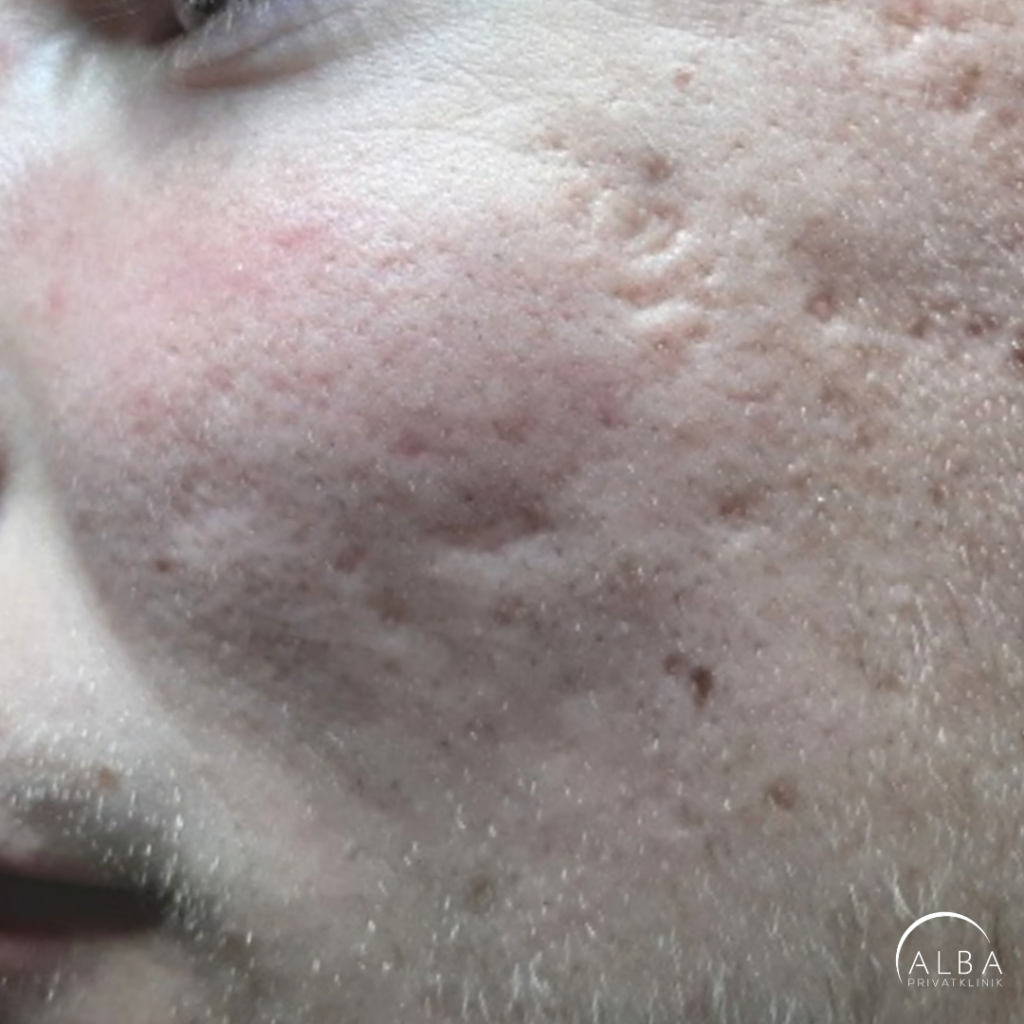
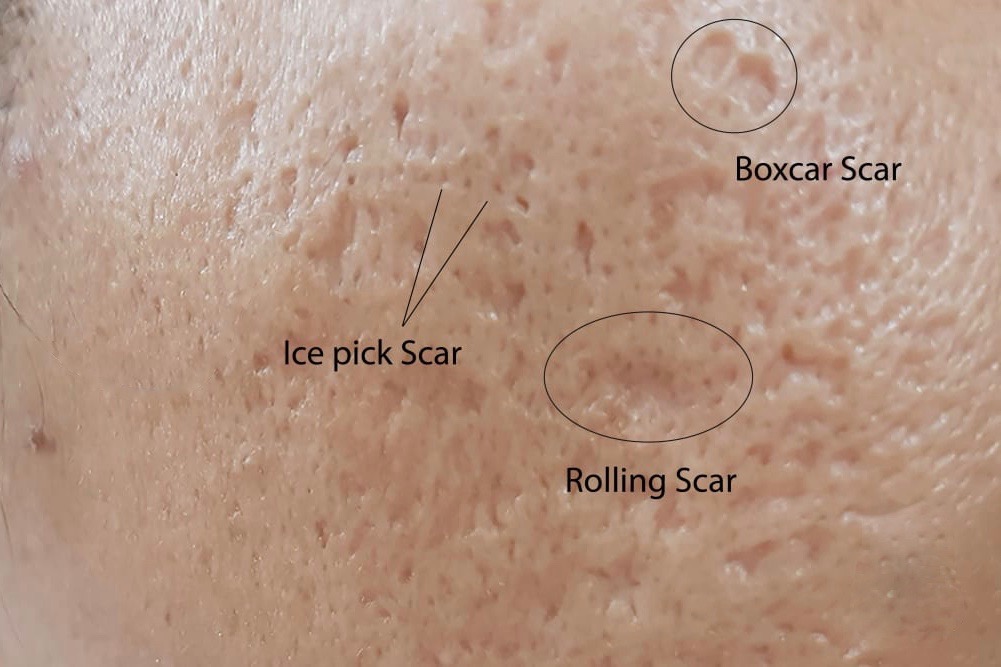
HOW MUCH CAN YOU EXPECT YOUR ACNE SCARS TO IMPROVE?
This depends on the acne scar type, characteristics of the scars, and the skin type. There are several different types of acne scars, including atrophic scars, boxcar scars, rolling scars, enlarged pores, ice pick scars, tethered scars, anchored scars, linear scars, red scars, hypertrophic scars, and keloids.
The type of acne scar defines how to treat the acne scar. Some acne scars can be improved by up to 98% by the use of the right methods.
In severe cases of atrophic rolling scars that have a lot of tissue loss, an improvement of 50% can be expected.

WHAT MAKES DR KNAP'S METHODS UNIQUE?
My aim for any treatment of acne scars is to find the best possible treatment for eac individual acne scar.
The first step is to identify all tethered and anchored acne scars and break down the fibrotic bands. This can be done with subcision which is a technique in which a Nokor needle is inserted percutaneously adjacent to the acne scar to manipulate and release the fibrous tissue, which pulls the acne scar down. This technique typically targets the tethered rolling scars and tethered boxcar scars.
To prevent new adherences to generate in the months after the procedure, a dermal filler is injected below the acne scar immediately after the subcision of the acne scar. The dermal filler works as a buffer and replaces any volume loss below the scar.
During the same session, TCA cross can also be performed to raise all the deep ice pick scars and narrow boxcar scars by applying a strong acid at the bottom of these scars. This breaks down the scar tissue, denatures the collagen and stimulates the tissue to start remodeling. The remodeling process begins immediately after the TCA cross treatment through the stimulation of fibroblasts in the dermis, which creates new collagens and raises the scar. Very deep ice pick scars and wide boxcar scars might be removed by punch excision or surgical excision in larger scars followed by stitches to close the wound.
When all the deep acne scars are managed with subcision, TCA cross and/or punch excision, the next step is to improve the general skin texture and raise the superficial acne scars. This is done with a fractional CO2 laser or a similar fractional energy-based device. The fractional CO2 laser makes controlled dermal tissue damage which stimulates the tissue to remodel and smoothen out the skin.
Hence, my approach is much more thorough and precise than most other dermatologists’, since I target each and every acne scar to make the best result possible. Targeting all acne scars with a fractional laser would never give the same high cure rate as my approach. This is why I have patients visiting my clinic from most of the world.
What is fractional laser resurfacing and how does it work in acne scarring?
In fractional laser resurfacing only a fraction of the skin is treated. The benefit of this approach is quicker healing and fewer side effects compared to fully ablative laser resurfacing which was used in the 90s.
Fractional CO2 laser skin resurfacing is an internationally recognized technique to improve acne scars.
Fractional CO2 laser skin resurfacing is excellent for atrophic boxcar scars and rolling scars. When the acne scars are treated with fractional laser, the laser makes controlled dermal damage in the skin which stimulates new collagen production and remodeling of the acne scar tissue. However, this technique cannot stand alone in most patients who have a combination of different acne scar types.
want to know more about fractional lasers for acne scar treatment?
Please, read more about fractional CO2 laser in acne scar management.
Is fractional laser the best method for acne scars?
No. However, fractional laser resurfacing is an excellent treatment for some types of acne scars and for improving the overall skin texture, but it’s not the best treatment for all types of acne scars.
Treating acne scars depend on a lot of different factors including acne scar type and your skin type. There are many different acne scar types and most patients have a variety of acne scar types including ice pick scars, boxcar scars, rolling scars, enlarged pores, tethered scars, etc. Therefore, most patients require a combination of different methods to achieve the ideal outcome and the highest cure rate for each individual acne scar.
My approach is to focus on the deepest acne scars first and to raise those acne scars to a certain depth before using a fractional laser. This can be done with a variety of methods, including TCA cross, subcision, dermal fillers, and surgical revision. Which methods I use depend on the type of acne scars, their characteristics and the skin type of the patient.
Thereafter, fractional laser resurfacing can be performed to improve the skin texture and superficial acne scars.
Which role do subcision and dermal fillers play in treating acne scars?
Tethered and anchored scars are ideally treated with subcision. This is a minimally invasive surgical technique that I use to break down the fibrotic scar tissue that pulls down the skin surface to the underlying fat tissue or surface of the facial muscles in tethered scars.
When breaking down the fibrotic bands, the acne scar is immediately raised. This is done with a sharp needle or with a Nokor needle.
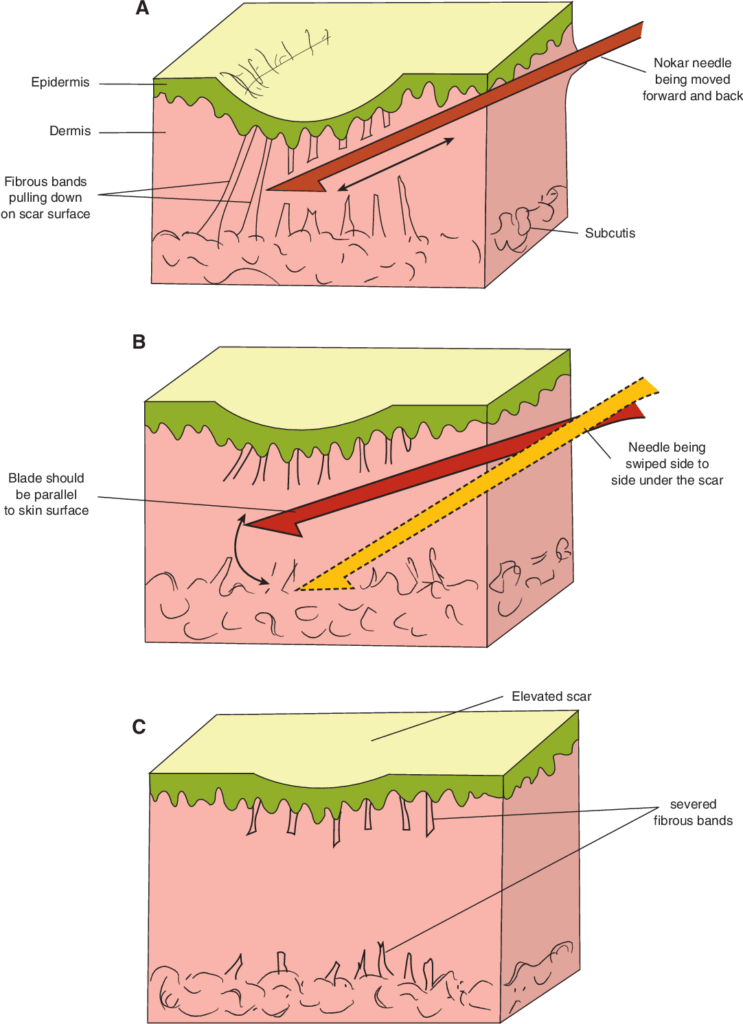
After subcision, I inject a bit of dermal filler into the space underneath the acne scar. Here, the dermal filler acts as a buffer and prevents the scar from creating new adherences to the underlying structures during the following months.
Dermal filler is also important in treating atrophic acne scars which have a substantial amount of tissue loss. In those scars, the dermal filler replaces the volume loss and gives an immediate result after the procedure.

Which role do micro-needling and dermaroller play in treating acne scars?
Micro-needling or skin needling can be useful for mild and early acne scars. However, as an acne scar specialist, I tend to get the more severe cases of acne scars. In those cases, micro-needling and dermaroller simply have very little effect compared to a laser and other methods that I use, including subcision, TCA cross, and surgical acne scar revision.
When do I perform surgical acne scar revision?
Certain types of acne scars are better treated by excising the acne scar in local anesthesia followed by fractional laser resurfacing of the surgical scar. This technique mainly concerns wide atrophic boxcar scars and deep ice pick scars.
To read more about punch excision and surgical acne scar revision, click here.
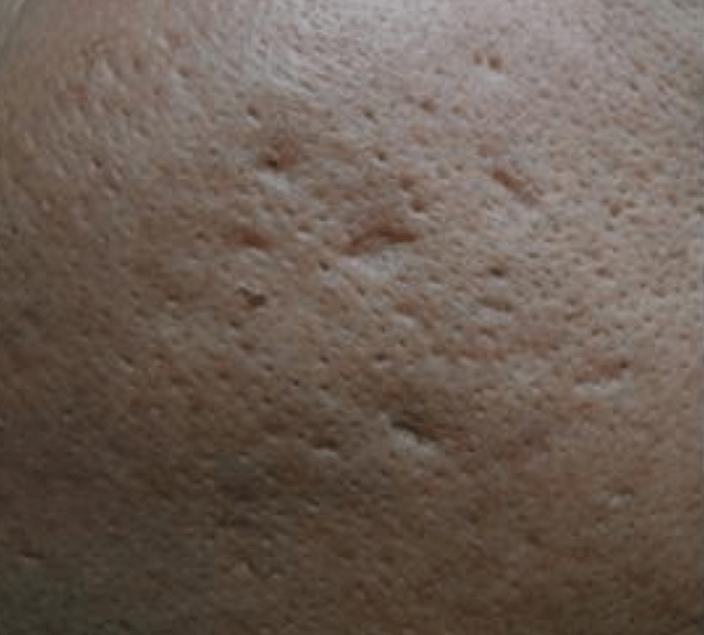
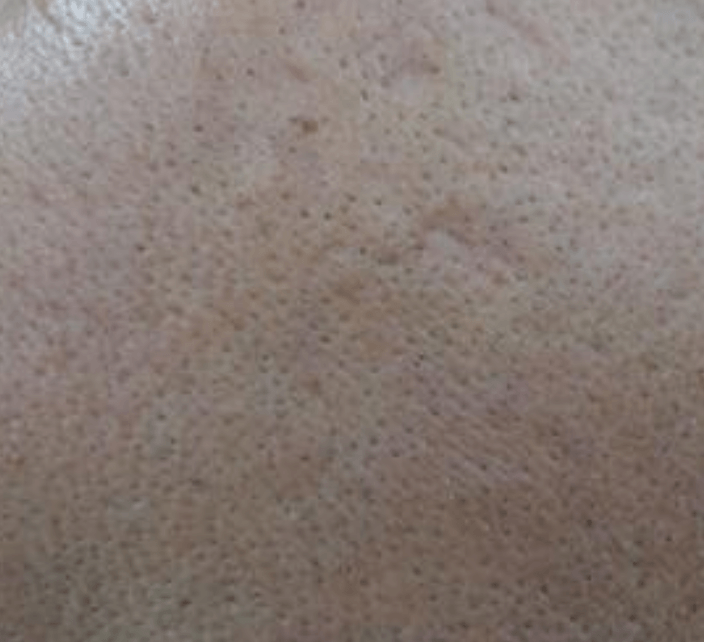
When do I perform TCA cross?
TCA cross is an excellent treatment for enlarged pores, ice pick scars, piercing scars, linear scars, narrow boxcar scars, and chickenpox scars.
The best thing about TCA cross is that it can be used for those acne scars which are very difficult to revise with a fractional laser and other methods.
The result after TCA cross is seen after 2-4 treatment which can be performed 4-6 weeks apart. However, patients with ethnic skin type should expect an additional of 1-2 treatments since the TCA concentration I use in ethnic skin types is weaker to reduce the risk of PIH (post-inflammatory hyperpigmentation).
Please, read more about TCA cross in acne scar management.
Dr. Ulrik Knap about acne scar revision
Having troubles with acne scars and wanting a specialist to manage your acne scars, then the very first step is to find a skilled laser and acne scar specialist in whom you trust.
I personally believe that this is the best foundation for a successful outcome.
When seeing a new acne scar patient for the first time in my clinic, I do a thorough acne scar analysis to identify the different acne scar types. Identifying the different acne scar types and matching them with the right methods gives me the highest success rate to the satisfaction of my patients.
The physical examination of the skin is a 3-dimensional analysis, which I perform by the use of angled lighting. I also have the patient mimic and smile when I look for tethered and anchored scars which should be managed with subcision in combination with a dermal filler. Touching the skin is also important so I can get a feeling of how deep the fibrosis lie in the skin, and how to manage each individual scar.
When I have done my analysis of the skin, the next step is mapping of the acne scars, photographing and planning of the acne scar revision program. Depending on your skin type, and acne scar type, a typical acne scar revision program takes 4-8 months, but it may last longer as well as shorter depending on the severity of your acne scars.
My approach is to find the best method for each individual acne scar. Therefore, I use a variety of methods, including punch excision and surgical excision, subcision, dermal filling, TCA cross and fractional lasers. In some patients with shallow rolling scars and ice pick scars, excellent results are obtained by performing TCA cross and fractional laser resurfacing. In other patients with severe atrophic rolling scars with tethering and deep ice pick scars, a combination of subcision, dermal fillers, punch excision, TCA cross and fractional laser resurfacing might give the best results.
Basically, no patients are similar, and the acne scar revision program is individually tailored for each individual patient.
My approach is always to start with the worst and most visible acne scars. Revision those acne scars and raising them to a certain depth makes a good foundation for the following step which is to improve the superficial acne scars.
As a laser and acne scar specialist, I see patients from all over the world, and my approach is unique and tailored for each individual patient. Hence, achieving the highest possible cure rate is my one and only goal for my patients
Best Regards

Ulrik Knap, MD., Laser & Acne scar specialist

